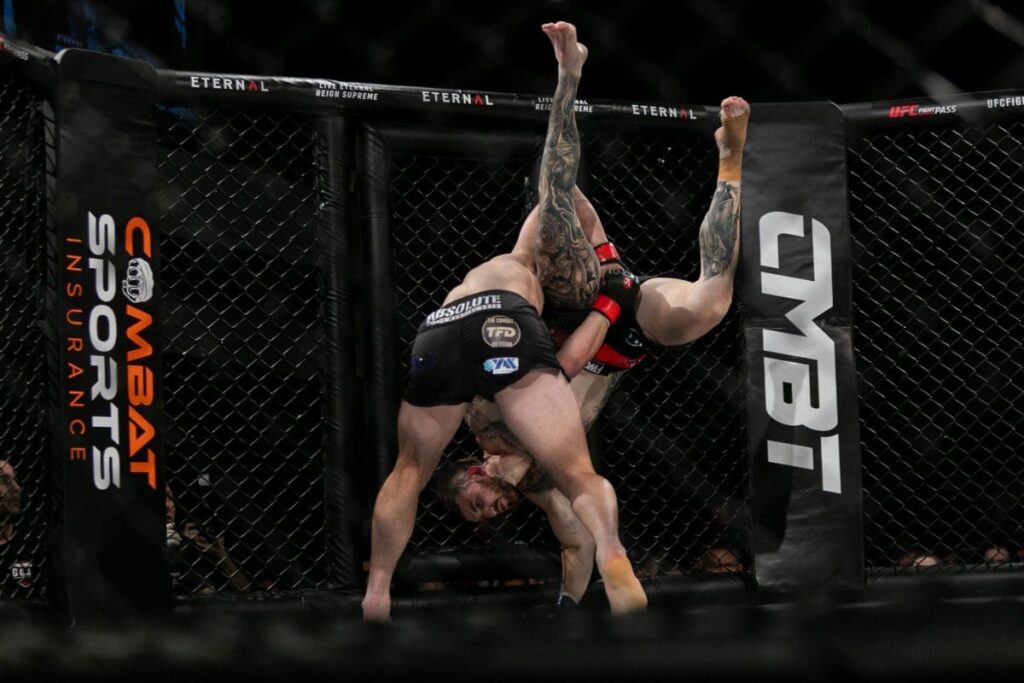Insurance is vital for personal trainers in a boxing gym. They face unique risks and liabilities due to the physical nature of their work. Personal trainers in a boxing gym need insurance to mitigate the financial impact of accidents, injuries, and property damage that may occur during training sessions.
In this article, we will explore the importance of insurance for personal trainers in a boxing gym and different types of insurance coverage. We will also discuss considerations such as coverage amounts, the distinction between independent contractors and employees, and where to find reliable insurance providers.
Ensure the financial protection of your personal training business with a comprehensive personal trainer insurance policy.
Insurance Considerations for Personal Trainers Working in a Boxing Gym
Working as a personal trainer in a boxing gym comes with its own set of unique risks and considerations.
Unique risks associated with working in a boxing gym as a personal trainer may include:
- Boxing Techniques: Personal trainers in a boxing gym often teach and demonstrate various boxing techniques to clients. The physical nature of these techniques increases the risk of injuries such as sprains, strains, or even more severe injuries like fractures.
- Equipment Usage: Boxing gyms have specialised equipment such as punching bags, speed bags, and boxing gloves. Mishandling or improper use of this equipment can result in accidents or injuries to both trainers and clients.
- Sparring Sessions: Sparring sessions are common in boxing gyms for clients to practise their skills. However, the intense nature of sparring can lead to accidental punches, falls, or collisions, potentially causing injuries to both participants.
- Contact Sports Injuries: Boxing is a contact sport, and personal trainers may be exposed to a higher risk of injury due to their involvement in training sessions, including holding pads or mitts for clients, which can lead to accidental blows or strains.
- Facility Hazards: Boxing gyms may have specific hazards such as uneven floors, wet surfaces, or poorly maintained equipment, which can increase the risk of slips, trips, or falls for trainers and clients alike.
- Cardiovascular Stress: Boxing workouts can be physically demanding and place stress on the cardiovascular system. Trainers need to be mindful of clients’ health conditions and ensure appropriate safety measures are in place to avoid potential medical emergencies.
- Emotional and Psychological Considerations: Personal trainers may encounter clients who have specific emotional or psychological challenges related to their fitness goals. Ensuring appropriate support and guidance while addressing these concerns is essential to prevent any potential harm or claims related to emotional distress.


Determining the Appropriate Amount of Insurance Coverage:
Personal trainers working in a boxing gym should carefully consider the appropriate amount of insurance coverage they need. This involves evaluating the nature of their work, the number of clients they train, the value of their equipment, and the potential financial impact of a claim or lawsuit.
Consulting with insurance professionals who specialise in fitness industry coverage can help personal trainers assess their specific needs and determine the appropriate amount of insurance coverage required.
Considerations for Independent Contractors versus Employees:
Insurance considerations may vary for personal trainers working as independent contractors versus those who are employees of a boxing gym.
Independent contractors typically need to secure their own insurance coverage to protect themselves from potential liabilities. They should consider liability insurance, professional liability insurance, and workers’ compensation insurance if they do not have access to the coverage provided by the gym.
On the other hand, personal trainers who are employees of a boxing gym should verify that their employer has appropriate insurance coverage in place, including workers’ compensation insurance, to protect them in the event of work-related injuries or illnesses.
Types of Insurance Coverage for Personal Trainers
When it comes to insurance coverage for personal trainers, there are several key types to consider. These insurance policies are designed to provide protection against various risks and liabilities that personal trainers may face in their line of work. The primary types of personal trainer insurance include:
1. Liability Insurance
Liability insurance is foundational coverage for personal trainers. It provides essential protection against potential claims and liabilities that may arise during the course of their work. This insurance coverage helps cover legal costs, medical expenses, and potential settlements or judgments.
Liability insurance for personal trainers offers financial coverage in the event that a trainer is held liable for injuries or property damage caused to clients or third parties during training sessions. This insurance typically covers legal expenses, medical costs, and potential settlements or judgments that may arise from such incidents. It acts as a safeguard, helping to protect personal trainers from bearing the full financial burden of these claims.
Importance of Having Liability Insurance as a Personal Trainer
Having liability insurance is of paramount importance for personal trainers. The physical nature of training sessions and the potential for accidents or injuries make this coverage essential.
Without liability insurance, personal trainers would be personally responsible for the financial consequences of accidents or injuries that occur during their sessions. This could result in significant financial strain, potential loss of personal assets, and damage to their professional reputation. Liability insurance provides a layer of protection and peace of mind, allowing trainers to focus on their work with confidence.
2. Professional Liability Insurance
Professional liability insurance (Gym liability insurance) for personal trainers provides protection in the event that a client alleges the trainer’s advice, guidance, or instruction resulted in harm or did not meet the expected professional standard.
This insurance coverage typically covers legal expenses, settlements or judgments, and related costs that may arise from such claims. It is designed to protect personal trainers from potential financial liabilities associated with professional errors, omissions, or negligence.
How it Differs from General Liability Insurance
While general liability insurance covers a broad range of accidents, injuries, and property damage that may occur during training sessions, professional gym public liability insurance specifically focuses on claims related to professional negligence or errors in providing fitness instruction.
It provides coverage for situations where a client alleges that the personal trainer’s professional advice, guidance, or instruction caused them harm or did not meet industry standards.
Examples of Situations Where Professional Liability Insurance Would be Necessary
Professional liability insurance for personal trainers is necessary for various scenarios. For instance, if a client sustains an injury during a training session and believes it was a result of incorrect form or improper exercise prescription, they may file a claim against the personal trainer.
Similarly, if a client experiences adverse effects from following the trainer’s nutritional or dietary recommendations, they may allege professional negligence. Professional liability insurance would provide coverage for legal defence costs, potential settlements or judgments, and other related expenses in these situations.
Other examples where professional liability insurance may be necessary include cases involving misdiagnosis or misinterpretation of a client’s fitness assessment results, inadequate supervision leading to injury, failure to provide appropriate modifications for clients with pre-existing conditions, or any claims alleging the trainer’s professional guidance or advice caused harm or did not meet industry standards.
By obtaining professional liability insurance, personal trainers can protect themselves from potential financial risks and reputational damage associated with professional claims.
If you are joining a martial art gym for the first time, read this blog post.
3. Workers’ Compensation Insurance
Having workers’ compensation insurance is crucial for personal trainers who are employees of a boxing gym or fitness centre. It serves as a safety net, protecting trainers from the financial burden of work-related injuries or illnesses.
Without this coverage, personal trainers could be responsible for their own medical expenses, rehabilitation costs, and lost wages, which can significantly impact their financial stability and future earning potential.
Workers’ compensation insurance ensures that trainers receive necessary medical treatment and income support during their recovery, allowing them to focus on their health without undue financial stress.
Examples of Situations Where Workers’ Compensation Insurance Would be Necessary:
Workers’ compensation insurance for personal trainers may come into play in various situations. For instance, if a personal trainer sustains a muscle strain or sprain while demonstrating exercises to a client and requires medical attention and time off work, workers’ compensation insurance would cover their medical expenses and provide wage replacement during their recovery period.
Similarly, if a trainer slips and falls on a wet floor in the gym, resulting in an injury that requires medical treatment and time away from work, workers’ compensation insurance would provide the necessary benefits.
Other examples where workers’ compensation insurance may be necessary include injuries from weightlifting accidents, repetitive motion injuries, such as tendinitis from continuous repetitive movements, or respiratory illnesses caused by exposure to chemicals or poor air quality in the gym facility.
By ensuring workers’ compensation insurance coverage, personal trainers can protect themselves from the financial and medical consequences of work-related injuries or illnesses.


Other types of insurance coverage that may be relevant to personal trainers include:
- Property Insurance: This coverage can protect personal trainers’ equipment, such as exercise machines, weights, and other training tools, from damage or loss due to events like theft, fire, or natural disasters.
- Cyber Liability Insurance: In today’s digital age, personal trainers may store client information electronically, making them vulnerable to data breaches or cyberattacks. Cyber liability insurance helps cover the costs associated with data breaches, such as notifying affected parties and providing credit monitoring services.
- Business Interruption Insurance: This coverage assists personal trainers if their business operations are temporarily suspended due to unexpected events like property damage or natural disasters, helping cover ongoing expenses and lost income during the interruption.
In the demanding world of combat sports, insurance considerations play a crucial role in safeguarding personal trainers and gym owners from potential risks and liabilities.
Personal trainers working in a boxing gym face unique challenges, including the physicality of training sessions, the nature of boxing techniques, and the inherent risks associated with contact sports. By understanding the importance of liability insurance, professional liability insurance, and workers’ compensation insurance, trainers can mitigate the financial and legal consequences of accidents, injuries, or professional claims. When looking for the best personal training insurance coverage, consider the specific needs of your business and trainers.
Looking for comprehensive insurance coverage for your boxing gym or personal training services in the world of combat sports?
Contact Combat Sports Insurance today to discuss your insurance needs and receive a personalised quote.
Note: The material offered here is for informational purposes only. It does not constitute legally binding advice and should not be a substitute for a consultation with an insurance expert




